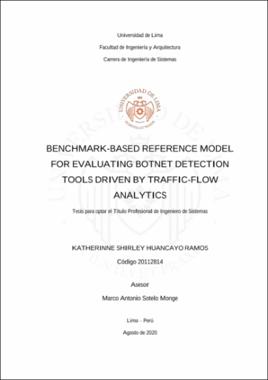Benchmark-Based Reference Model for Evaluating Botnet Detection Tools Driven by Traffic-Flow Analytics

View/
Huancayo_Ramos_Katherinne_Shirley.pdf
(application/pdf: 725.5Kb)
(application/pdf: 725.5Kb)
Date
2020Author(s)
Advisor(s)
Metadata
Show full item recordAbstract
Botnets are some of the most recurrent cyber-threats, which take advantage of the wide
heterogeneity of endpoint devices at the Edge of the emerging communication environments for
enabling the malicious enforcement of fraud and other adversarial tactics, including malware, data
leaks or denial of service. There have been significant research advances in the development of
accurate botnet detection methods underpinned on supervised analysis but assessing the accuracy
and performance of such detection methods requires a clear evaluation model in the pursuit of
enforcing proper defensive strategies. In order to contribute to the mitigation of botnets, this paper
introduces a novel evaluation scheme grounded on supervised machine learning algorithms that
enable the detection and discrimination of different botnets families on real operational
environments. The proposal relies on observing, understanding and inferring the behavior of each
botnet family based on network indicators measured at flow-level. The assumed evaluation
methodology contemplates six phases that allow building a detection model against botnet-related
malware distributed through the network, for which five supervised classifiers were instantiated
were instantiated for further comparisons—Decision Tree, Random Forest, Naive Bayes Gaussian,
Support Vector Machine and K-Neighbors. The experimental validation was performed on two public
datasets of real botnet traffic—CIC-AWS-2018 and ISOT HTTP Botnet. Bearing the heterogeneity of
the datasets, optimizing the analysis with the Grid Search algorithm led to improve the classification
results of the instantiated algorithms. An exhaustive evaluation was carried out demonstrating the
adequateness of our proposal which prompted that Random Forest and Decision Tree models are the
most suitable for detecting different botnet specimens among the chosen algorithms. They exhibited
higher precision rates whilst analyzing a large number of samples with less processing time. The
variety of testing scenarios were deeply assessed and reported to set baseline results for future
benchmark analysis targeted on flow-based behavioral patterns.
How to cite
Huancayo Ramos, K. S. (2020). Benchmark-Based Reference Model for Evaluating Botnet Detection Tools Driven by Traffic-Flow Analytics [Tesis para optar el Título Profesional de Ingeniero de Sistemas, Universidad de Lima]. Repositorio institucional de la Universidad de Lima. https://hdl.handle.net/20.500.12724/12724Publisher
Universidad de LimaSubject
Collections
- Tesis [68]
The following license files are associated with this item:

